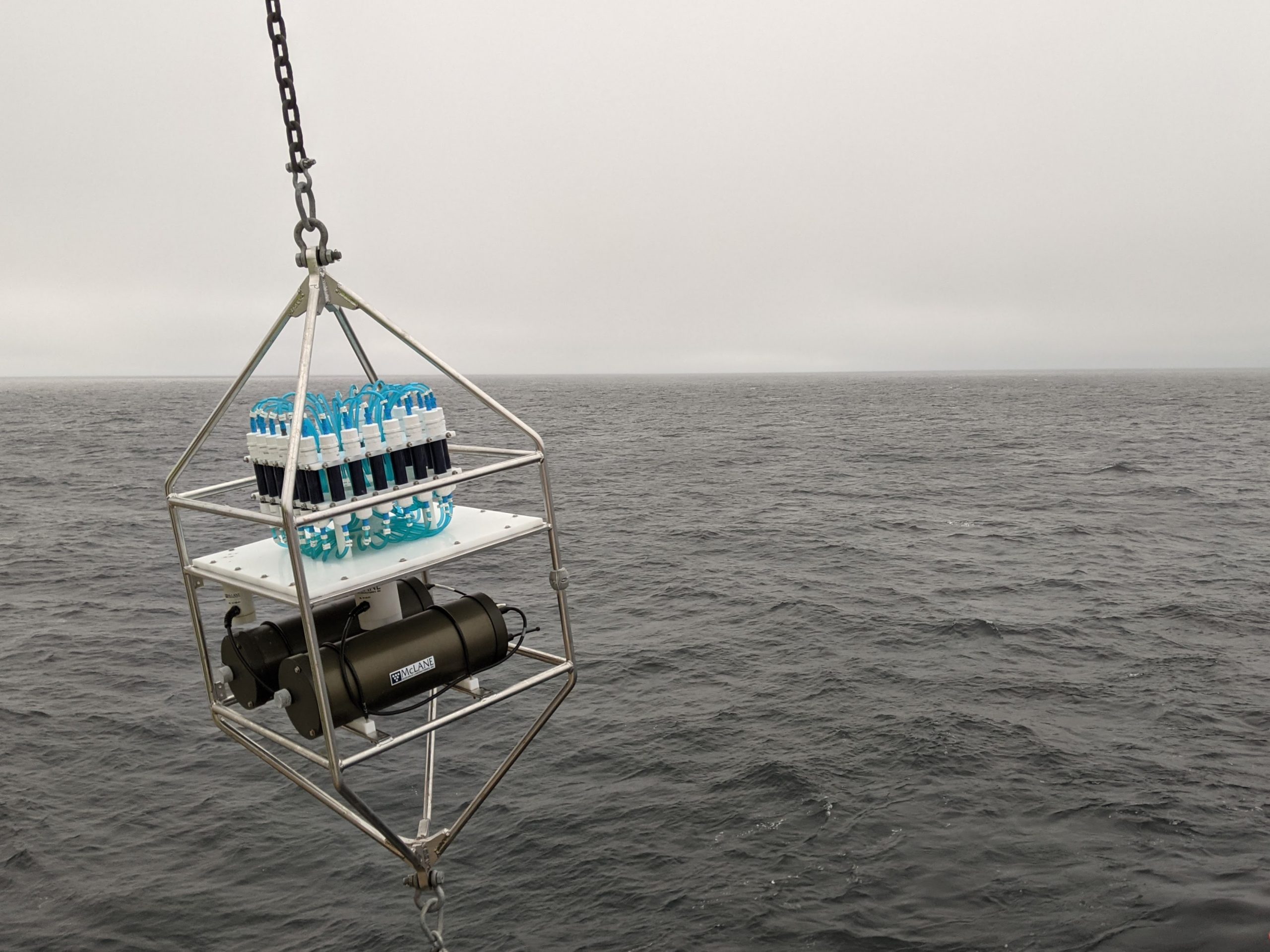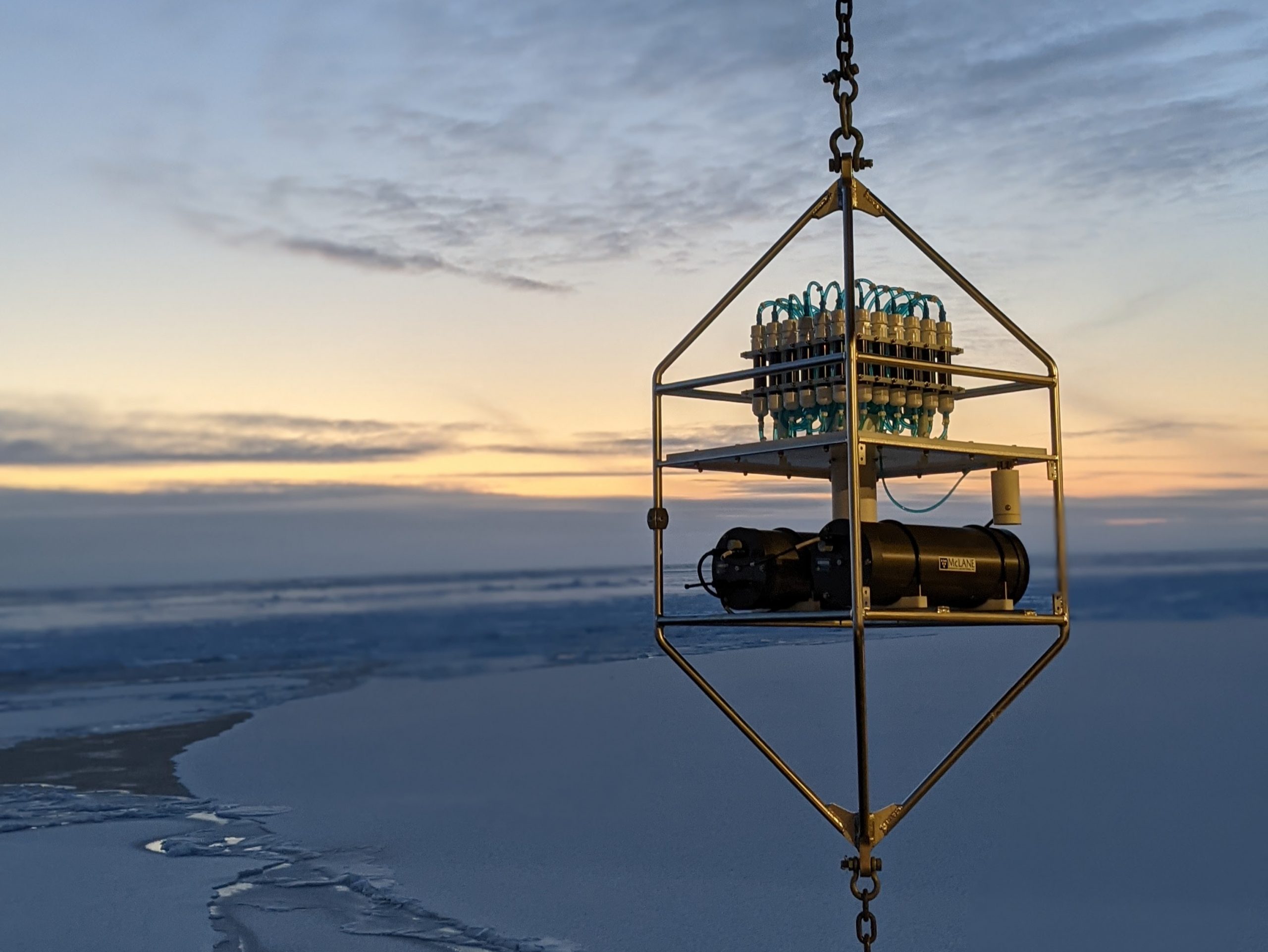MoRIS - Moored Radium In-situ Samplers
We have partnered with McLane Laboratories, Inc. to create first-of-their-kind in-situ radium samplers that will collect monthly samples over a two year deployment. The two samplers will be deployed on moorings located on the Laptev & East Siberian slopes, and will give us unprecedented temporal resolution in a key tracer of shelf material fluxes.
Paired water isotope samples will be collected with each radium sample, to help distinguish seasonal changes in the influence of various water mass sources (rivers, sea ice melt, Atlantic & Pacific water). Paired microcat CTD measurements will also record changes in temperature and salinity.


MoRIS will collect the first high resolution radium time series in the Arctic
Seasonal ice formation in fall causes water column overturning that can drive solute exchange from shelf sediments into the overlying water column. River discharge also exhibits strong seasonal variability, with highest discharge rates in late spring and early summer following ice breakup. In addition to driving seasonal changes in the delivery of nutrients and organic matter to the coastal ocean, this changing freshwater flux affects stratification and water residence times in shelf seas. A longer water residence time over the shelf may facilitate a more pronounced release or uptake of elements by shelf sediments. For these reasons, we hypothesize that there is a resulting seasonal cycle in the export of shelf-derived materials from the Eurasian shelves, and an understanding of this seasonal cycle is necessary to separate seasonal variability from long-term climate-driven trends in the release of shelf-derived materials.
In addition to the long term increases, the amplitude in the seasonal changes may be growing as well, due to larger areas of sea ice formation and melt as summer ice cover retreats. As these processes can only be documented by sub- annual sampling of the Arctic water column, MoRIS will collect the first ever high-resolution time- series of Ra-228 and Ra-226 in the Arctic Ocean to constrain the seasonal variability in the Transpolar Drift (TPD) signal leaving the shelf. Because the position of the TPD can shift between the Laptev and East Siberian Seas depending on the Arctic Oscillation, we will collect monthly samples over four years (two consecutive 2-year deployments) at two locations situated at the exit points of the TPD from the shelf.